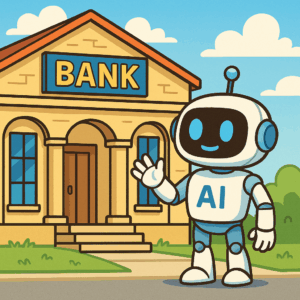By: Tom Starner for Human Resource Executive, Photo by Helloquence on Unsplash
For many organizations, systems with a knowledge base—such as SocialChorus, Dynamic Signal, Ryver, ServiceNow and Zendesk—can increase employee engagement, eliminate paper processes and make information available faster and in more useful ways for employees. These platforms continue to improve the end-user experience through better interfaces, experts say.
According to Craig Johnson, a partner in Mercer’s career business who specializes in the end-user experience, in early platform releases, knowledge-base tools functioned well with a lot of “out-of-the-box” power. However, Johnson says, many of these tools were more focused on helping the organization track and complete tasks (i.e., submit and track a query to HR) and less focused on the end-user experience.
“Today, more sophisticated versions have improved the experience for end-users and organizations,” Johnson says. “Organizations make big invests in technology for employees, so it is not enough for these platforms to simply work—they need to be easy for end-users to access and use, because a lack of traffic [or] usage results in reduced ROI.”
To help make that happen, SocialChorus, a global workforce communications platform, just launched of Content Planner, an enterprise-level, strategic planning tool that gives organizations one place to plan their content strategies and measure the impact of employee communications. According to Tim Christensen, chief technology officer at SocialChorus, Content Planner offers a high-level view of communications programs to strategically plan content, but also the ability to easily collaborate on review cycles, evaluate past performance and even predict the future performance of posts.
“From hiring to reviews to D&I, HR leaders are tasked with many initiatives at once and this can often create disjointed, one-off comms plans,” he says. “Historically, we have seen the majority of content [65 percent] is created within 24 hours of publishing. With Content Planner, our goal is to make the employee experience more connected, engaging and useful.”
Christensen says Content Planner can help customers be more strategic by publishing within the context of their communications plan and leveraging insights to identify the best opportunities to engage their employees in a more unified way.
“They can plan for the future, collaborate with other teams, measure their results and even predict the effectiveness of what they have planned,” he says.
Christensen adds that digital transformation is a major undertaking for many companies and employee communications is an integral part of this. As a result, many HR leaders are tasked with looking for new and innovative ways to engage with their employees, no matter where they are or what channels they use. Not only are HR leaders and communicators responsible for developing an effective employee communications plan, but they are also increasingly required to demonstrate the value and impact of internal communications on the business.
“Because of this, data reporting and measurement is a critical aspect of their strategy in being able to showcase how employee communications and engagement generates real business results,” he says. Christensen adds that many HR leaders are currently “flying blind” and this puts them at a disadvantage when it comes to reaching employees.
“Unlike marketing and sales that have long had strategic tools for planning and measurement, they simply haven’t had the same tools to measure metrics and connect the impact of communications to HR programs,” he says, adding that by syncing to one system and partnering across IT, HR and communications, SocialChorus is helping customers connect all of their communications strategies, all from one platform and in a way that allows them to demonstrate the impact on the business.”
According to Joelle Kaufman, chief marketing officer at Dynamic Signal, an employee communication and engagement platform that competes in the same space as SocialChorus, prioritizing and investing in strategic workforce communication is foundational to growing a business, improving agility and reducing turnover.
“We work with our customers to understand what we call the ’employee lifetime value’ and how to increase and extend it at every inflection point,” she says, “from recruiting to onboarding to training and development to ongoing value contribution to exit.”
Dynamic Signal’s Employee Communications and Engagement Platform, Kaufman says, can be used to encourage employee referrals for candidates (social recruiting) and accelerating onboarding using content categories, video, audio and interactive polls and surveys (Dynamic Signal customers report 19% faster onboarding). It is also used for ongoing training, development and engagement (via broadcasts including open enrollment and executive messages), encouraging employees to submit pictures, videos and stories for review that embrace company strategy and values. To that end the company’s customers report 17 percent faster training, 32 percent more employees reached and a 30 percent increase in employee engagement. Kaufman adds that customers report 16 percent higher productivity, 11 percent less turnover and 20 percent faster adoption of company initiatives.
“Successful organizations recognize that their customer experience is intimately connected to their employee experience,” Kaufman says. “And the vast majority of employees – seventy four percent – report that they are missing out on company information either because there is too much content to consume for the desk-oriented employees or next to no personalized content reaching their desk-less, distributed employees.”
Mercer’s Johnson says that despite ongoing improvements in these digital tools, challenges remain.
“We still see risks with knowledge management-based tools. One is ‘garbage in, garbage out.’ These systems are only as good as the quality of the information that is loaded into the knowledge base,” he says. For example, Johnson cited outdated policy information in a knowledge base may result in an employee getting the wrong information based on their inquiry.
“If the experience in quickly accessing the policy has improved, but the content is wrong, it hasn’t helped the user,” he says.
Governance is another challenge organizations face, Johnson explains, explaining that setting up a governance structure to address the care and feeding of the knowledge base can mitigate headaches down the line.
“Often, the hard work begins when a system goes live. Someone needs to own the development of new content and content updates, as well as adoption of the frequent updates that come with these cloud-based platforms,” Johnson says. “As these technologies continue to evolve and the end-user experiences become more advanced, good content and good governance will still be two issues that need to be addressed.”
Read the original article here. Sign up for our newsletter here.




